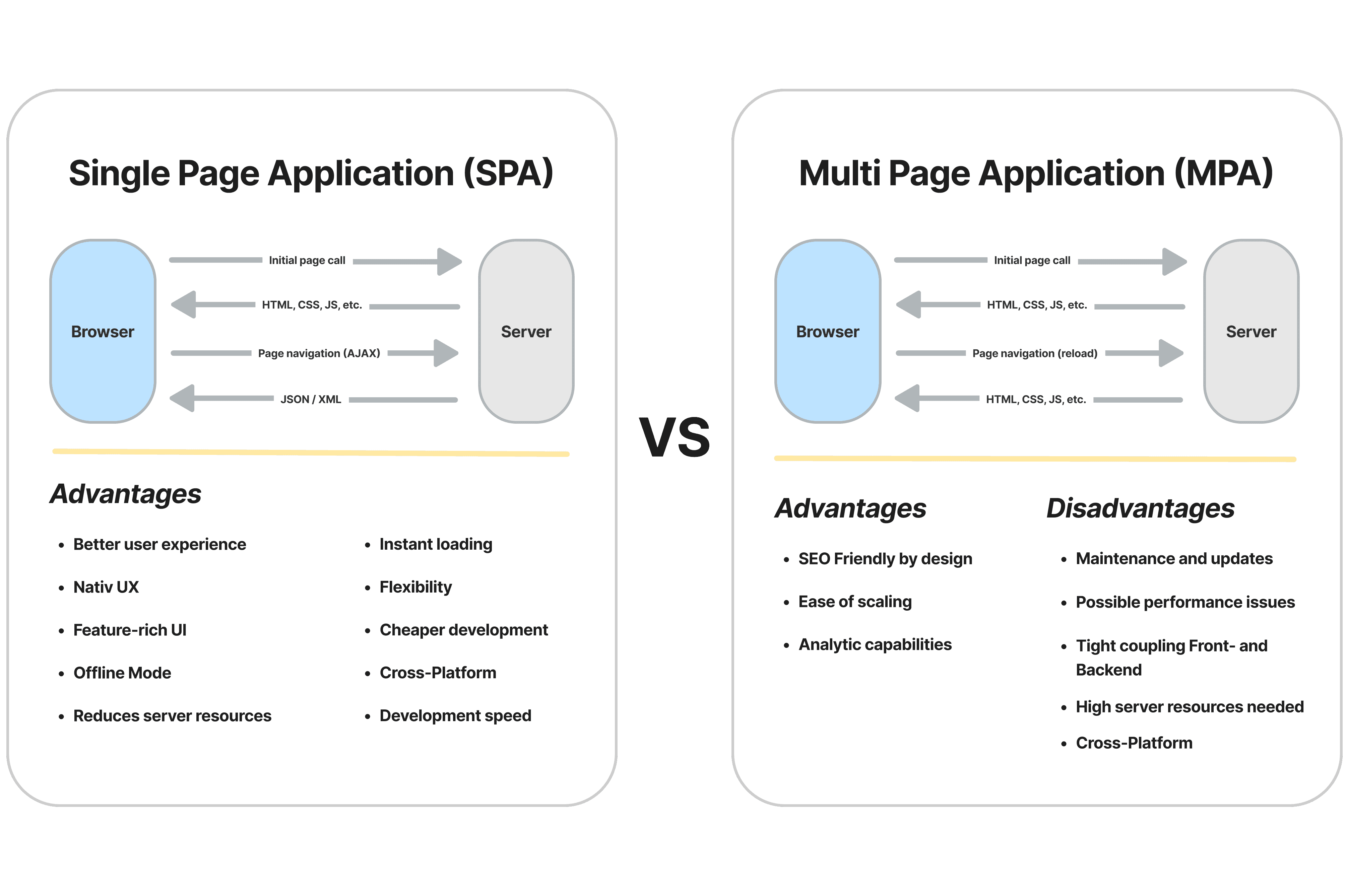
Single Page Application (SPA)
Introduction
Single Page Applications (SPAs) are a trend in web and mobile app development and have gained popularity in recent years. Unlike traditional web pages that reload the entire page with every click, an SPA loads the page only once on the initial call, thus avoiding additional server calls. This allows for quick and seamless navigation of the website, which in turn leads to an improved user experience. SPAs are usually created by developers using frameworks such as Angular, React or Vue.js and can be used for various use cases such as games, animations or offline applications. In this article, we will take a closer look at the advantages and disadvantages of SPAs and explain for which types of websites they are best suited.

1. architecture
Single Page Applications use a client-side architecture, where the server is only responsible for providing the data. The user interface is rendered on the client (i.e. in the browser), providing a faster and more interactive user experience.
2. technology stack
Single Page Applications typically use a technology stack based on modern web technologies such as JavaScript, HTML5 and CSS3. The most popular frameworks for SPA development are Angular, React and Vue.js.
3. loading speed
By loading the page once on the initial call and avoiding server requests while navigating within the application, Single Page Applications can load and respond very quickly. This allows for an improved user experience and higher customer engagement.
4 Scalability
Single Page Applications tend to be more scalable than traditional web applications because they allow the user interface to be decoupled from the application logic. This allows developers to update and extend the application faster without impacting the user interface.
5. offline capability
Another advantage of single page applications is that they are usually offline capable. This is because the client downloads and caches the entire application and all the resources it needs the first time it is called. This means that the application can continue to be used even if no Internet connection is available.
6. search engine optimization (SEO)
Although Single Page Applications pose some challenges in terms of SEO, they can still be optimized for search engines. To do this, developers must use special techniques to ensure that search engines can properly index and display the application's content.
7. security
As with any web application, developers must also be aware of security risks when developing single page applications. By using JavaScript and exposing the application logic to the client, there is an increased risk of cross-site scripting attacks and other security vulnerabilities. To mitigate these risks, developers must ensure that their application implements security best practices and techniques such as Content Security Policy (CSP) and Cross-Origin Resource Sharing (CORS).
8. compatibility with different devices
Single Page Applications are generally compatible with different devices and screen sizes because they are based on web technologies that can run on different devices. Moreover, by using Responsive Design, developers can adapt the user interface to different device sizes and ensure an optimal user experience on all devices.
9. maintenance and updating
An SPA is easier to maintain and update than a traditional multi-page application. Since the data is stored in the client cache, it is easier to make updates on the client side without requiring an update on the server. This saves time and resources for developers and IT teams.
10. better interactivity
Since an SPA has everything on one page, users can seamlessly navigate through the application without having to constantly reload the page. Users can browse and use the application without interruption. This improves the interactivity of the application and creates a better impression on the users.
11. more flexibility
An SPA provides developers with more flexibility in designing the user interface and creating features and processes. Since the application works from one page, it can be more easily customized and changed to meet the needs of users.
Conclusion
In summary, a single page application offers many advantages over a traditional multi-page application. It is faster, more interactive, more secure, and more flexible. If you want to build a web application, a SPA is definitely a good choice, especially when it comes to providing a great user experience.
